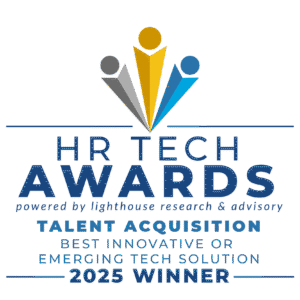From Paper to Portfolio: The Evolution of the Resume in the Age of Digital Hiring

For decades, the resume or CV served as the universal passport to employment opportunities—a succinct document summarizing work history, education, and capabilities. As someone who has spent more than 25 years consulting in talent acquisition strategy and recruitment technology, I’ve witnessed firsthand the dramatic shifts in how organizations evaluate talent and how candidates present themselves. From early systems that digitized paper resumes to AI-powered platforms that interpret human potential, the landscape has fundamentally changed. But perhaps the most profound shift is still unfolding: the transformation of the resume from a static snapshot to a dynamic, verified, and responsive digital portfolio.
The Origins: A Static Resume in an Analog World
In the early days, resumes were straightforward—often no more than a one- or two-page document crafted in Word or printed on high-quality paper. Candidates listed their job titles, responsibilities, and educational background in reverse chronological order. Tailoring each version for a specific job was considered best practice, and the success of a resume depended as much on formatting and phrasing as it did on substance.
This method, however, was inherently limited. It relied entirely on self-reporting with no validation, provided no context or proof of performance, and required manual updates and customization for each submission. In a world that valued paper processes and face-to-face interviews, it sufficed. But as technology advanced, the resume’s shortcomings became more evident.
The Rise of the Digital Profile
With the proliferation of platforms like LinkedIn, resumes moved from desktop files to searchable online profiles. Candidates could now maintain a real-time record of their career journeys, linking to projects, obtaining endorsements, and displaying achievements in multimedia formats. This evolution represented more than a format change—it introduced accessibility and discoverability. Employers could proactively source talent, and candidates had new ways to build a personal brand.
However, even with these digital enhancements, core issues remained. The majority of information was still self-reported. References, licenses, and degrees often went unchecked until deep in the hiring funnel. While these profiles offered richer narratives, they didn’t offer verification or dynamic interaction with the hiring process.
The Verified Career Portfolio: A Glimpse Into the Near Future
While today’s digital profiles represent a significant step forward, the next leap is just over the horizon. In the next two to three years, we anticipate the arrival of the verified career portfolio—a dynamic, authenticated, and portable career identity that goes far beyond resumes or LinkedIn profiles. It’s not mainstream yet, but the signals are clear: a shift is coming.
Imagine a platform where a candidate’s credentials, certifications, licenses, background checks, and structured reference feedback are all pre-validated and securely stored—ready to be shared with any employer, anytime. This future portfolio won’t just tell a story; it will prove it, backed by data from issuing bodies, educational institutions, and verified third parties.
Unlike today’s self-reported experiences, this portfolio will serve as a living, breathing profile—updated in real-time as professionals complete new training, add skills, or achieve performance milestones. Built with interoperability and privacy in mind, it will allow candidates to control access to their information, enabling trust-based transparency at scale.
Recruiters will benefit from richer context, faster insights, and a reduced reliance on manual screening. But the real shift is human-centric: this new model will empower candidates to own their narrative, accelerate their application process, and showcase their verified value—instantly and authentically.
This isn’t fantasy—it’s on the roadmap. Technologies like decentralized credentials, blockchain-secured records, and AI-driven identity verification are already laying the foundation. The next wave of innovation will transform hiring from static documentation to evidence-based decision-making, creating a win-win for both talent and employers.
Transparency for the Candidate: Real-Time Hiring Visibility
When I co-founded The Talent Board and the Candidate Experience Awards more than a decade ago, our mission was to shine a light on how candidates were treated during the hiring process. One insight has remained consistently clear: candidates deeply value transparency. They want to know where they stand. They crave communication, clarity, and control.
The verified portfolio of the near future won’t just hold data—it will provide real-time updates on a candidate’s journey through the hiring process. Just as we track a package or check the status of a flight, candidates will soon be able to log into their secure portal and see updates like:
- “Application viewed by recruiter”
- “Skills assessment in review”
- “Background check initiated”
- “Reference check complete—green light for offer”
This is the evolution of recruiting with respect—an experience designed not just to fill jobs, but to engage humans. It reinforces the employer brand, creates trust, and builds long-term talent relationships.
Where We’re Headed: A Career Passport Model
Imagine a world where candidates control their own verified career passport—a secure, transportable profile that can be shared with any employer, recruiter, or internal mobility program. No more re-entering the same data into dozens of systems. No more chasing down references or tracking expiration dates on licenses. Just a single, trusted source of truth that evolves with their career.
For organizations, this means less time spent verifying and more time matching. It means stronger candidate pipelines, improved diversity outcomes through objective data, and a better experience for all stakeholders.
Final Thoughts
The resume isn’t dead—it’s evolved. What started as a self-authored document has become a gateway to a future-ready, dynamic, and verifiable professional identity. As someone who’s spent a career helping organizations reimagine how they find and engage talent, I believe the next era will be built on transparency, trust, and technology that serves both sides of the hiring equation.
We owe it to candidates to build systems that reflect who they are today, with the flexibility to grow and the visibility they deserve. The future of talent acquisition will be built on mutual authenticity—and the portfolio is its foundation.


Great article!